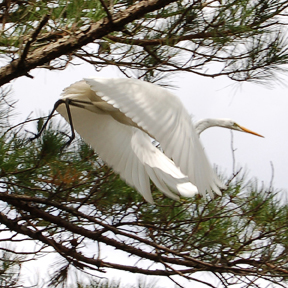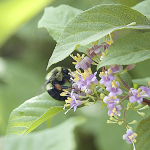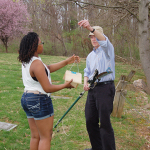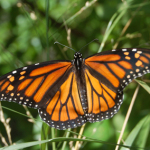AN ALLIANCE FOR
AWARENESS, ACTION
& WONDER

AWARENESS
 Studies of new findings on issues raised in Silent Spring continue to appear. RCLA has been committed to providing up to date, referenced reports on these research issues since its beginning. We believe in the public’s right to know about the hazards of pesticides. Such information is not readily available in the news media.
Studies of new findings on issues raised in Silent Spring continue to appear. RCLA has been committed to providing up to date, referenced reports on these research issues since its beginning. We believe in the public’s right to know about the hazards of pesticides. Such information is not readily available in the news media.
Pictured here is a bee nectaring on organic beauty berry blossoms. Providing safe habitat with this and other pesticide-free native plants helps counter bee population decline, an urgent problem associated with neonicotinoid insecticides and other pesticides. Beauty berry leaves have bee used to ward off mosquitoes. In past centuries, sprigs of the plant were attached to the horses harnesses to ward off moquitoes and other insect pests. In addition, beauty berries are readily consumed by birds.
June 2014
ACTION
 RCLA has distributed milkweed seeds and information about creating a safe habitat for Monarch butterflies to individuals of all ages and to organizations. Other RCLA intergenerational activity has included installing a wren house near Rachel Carson’s grave site in Rockville, MD. RCLA is committed to taking action and encouraging others to do so as well.
RCLA has distributed milkweed seeds and information about creating a safe habitat for Monarch butterflies to individuals of all ages and to organizations. Other RCLA intergenerational activity has included installing a wren house near Rachel Carson’s grave site in Rockville, MD. RCLA is committed to taking action and encouraging others to do so as well.
RCLA takes action on behalf of wrens by keeping our headquarters free of toxic chemical pesticides so there is a plentiful supply of insects for our wren neighbors. Wrens build nests in hanging flower pots near our homes and in boxes placed around our dwellings. Protecting them also helps protect our gardens from insect pests.
June 2014
WONDER
Nature is full of exciting and fun opportunities for children and adults to share a sense of wonder.
RCLA encourages intergenerational experiences through:
- Writing about the Sense of Wonder and featuring stories about “Wonder People”
- Providing the Rachel Carson House as a site for intergenerational Sense of Wonder activities
- Sponsoring the Rachel Carson Sense of Wonder Contest (previously conducted by the USEPA in 2015 (submission requirements available soon).
 Monarch butterflies represent one of the most remarkable migrations of any insect species. Their travel spans 3 countries, Mexico, U.S. and Canada. These outstanding survivors consume leaves from milkweek plants as caterpillars thereby thriving on what is toxic vegetation for most other animals. They dazzle us with their beauty and the incredible achievement of their journey.
Monarch butterflies represent one of the most remarkable migrations of any insect species. Their travel spans 3 countries, Mexico, U.S. and Canada. These outstanding survivors consume leaves from milkweek plants as caterpillars thereby thriving on what is toxic vegetation for most other animals. They dazzle us with their beauty and the incredible achievement of their journey.
June 2014

